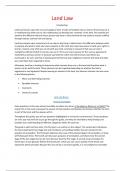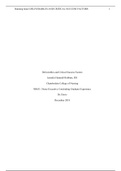Lecture notes
Land Law
- Module
- Land Law
- Institution
- University Of Oxford
These UK Land Law notes are a comprehensive and detailed module, covering all key areas of the UK syllabus. The notes include detailed explanations, case law summaries, and practical applications for every topic, making them an essential resource for mastering the subject. Topics covered include: ...
[Show more]




